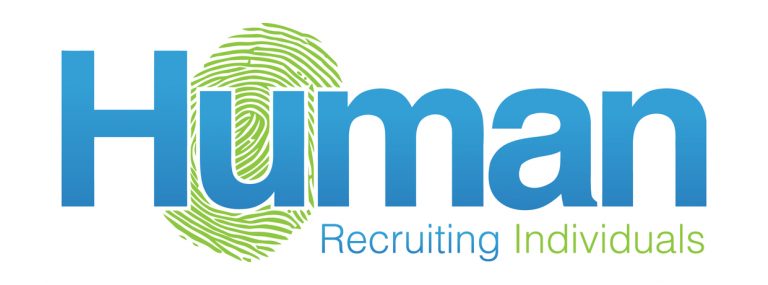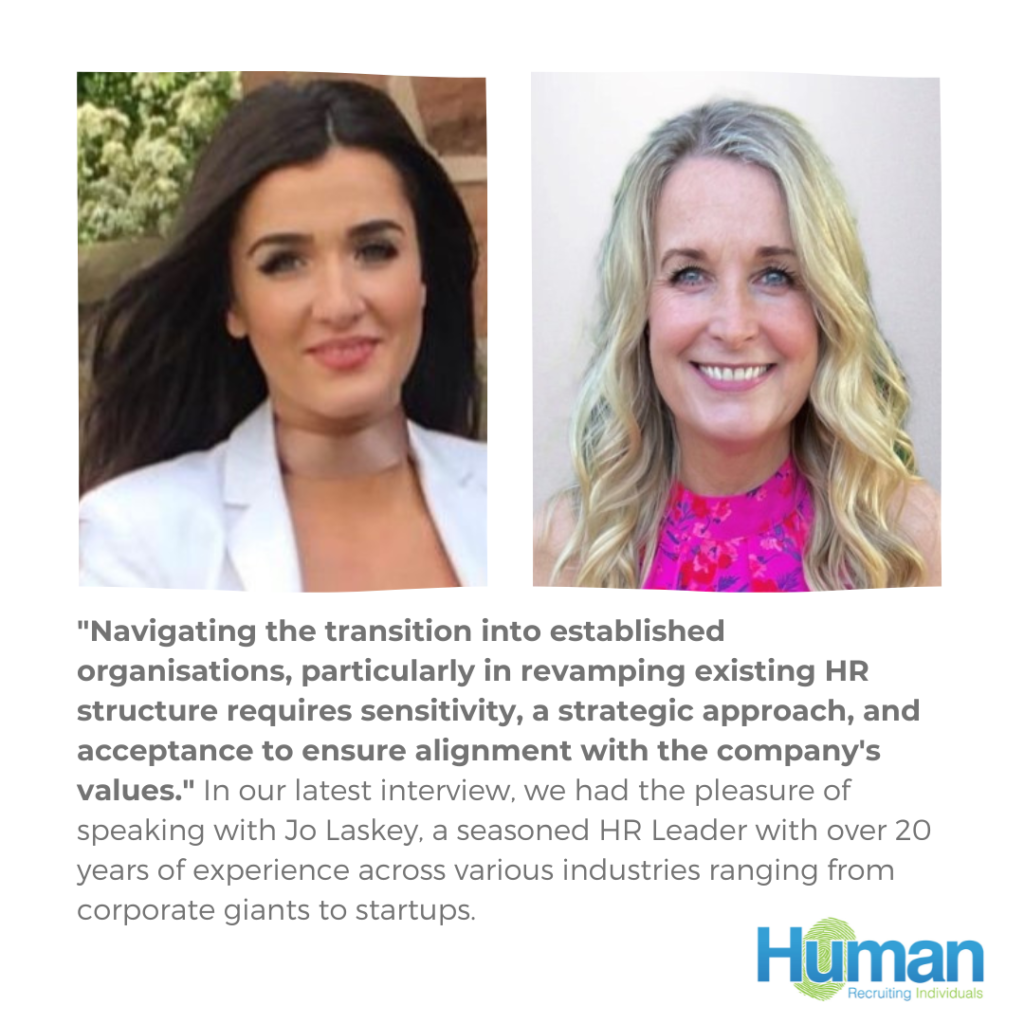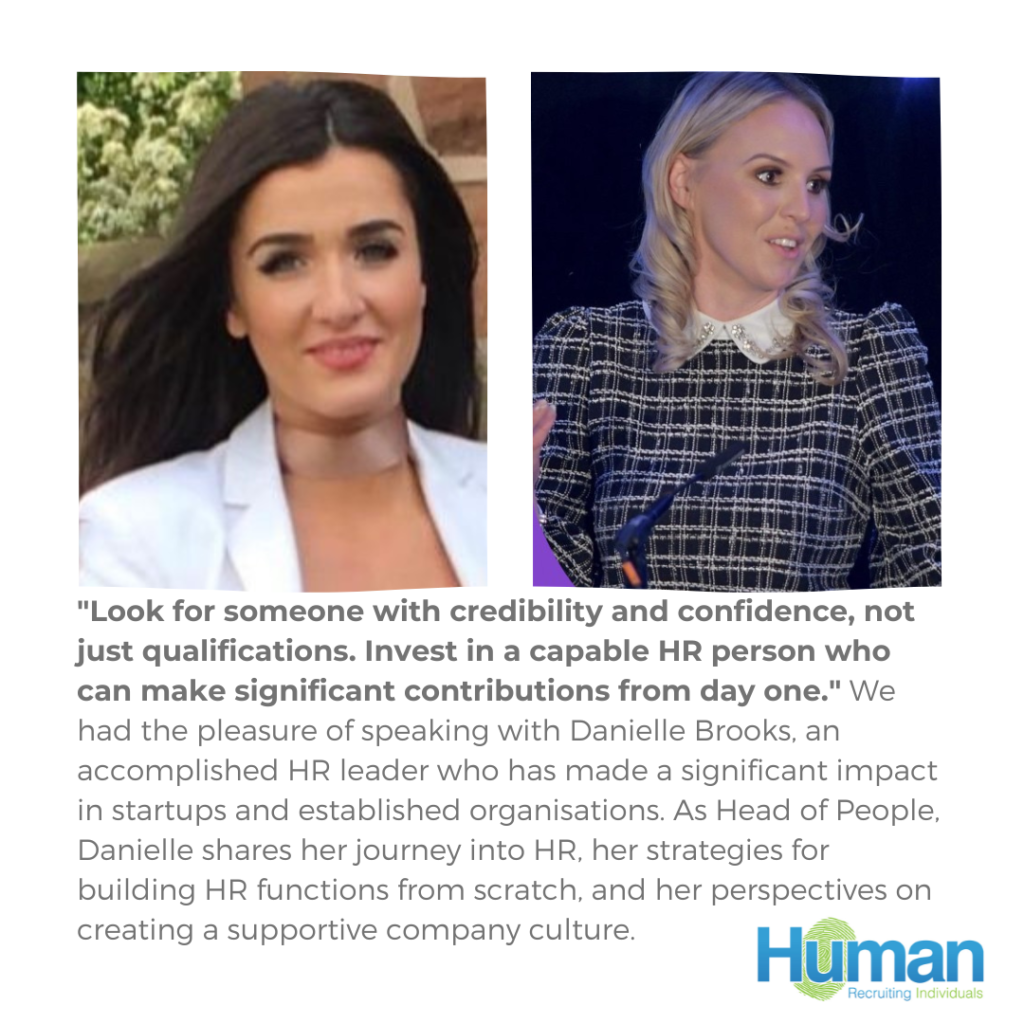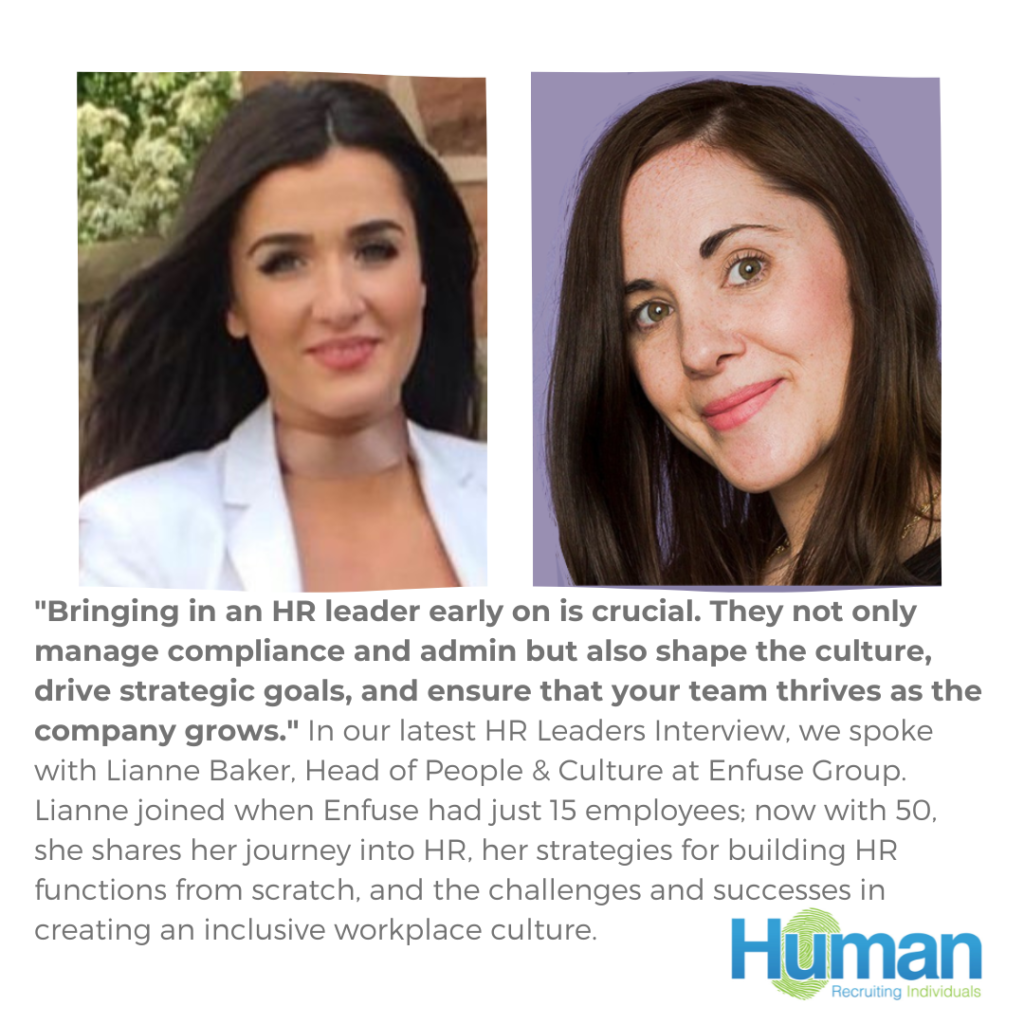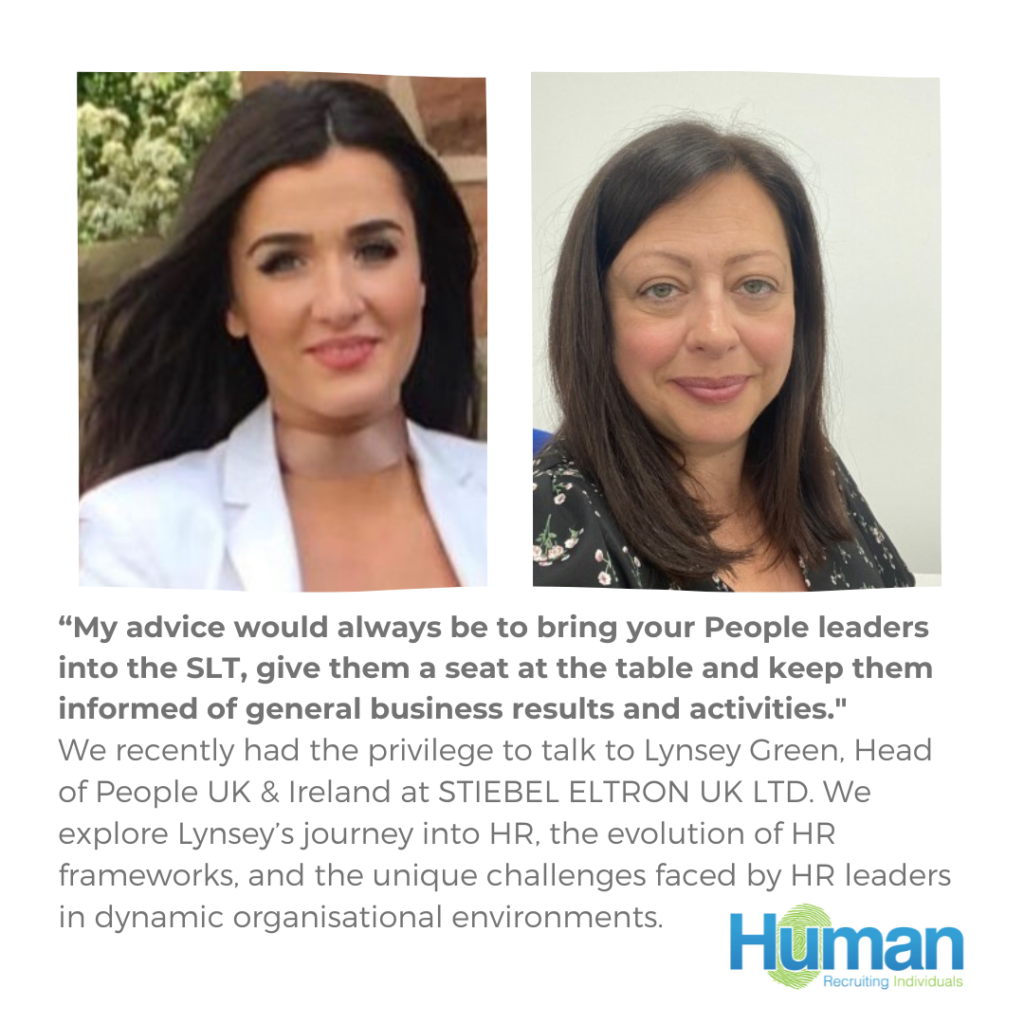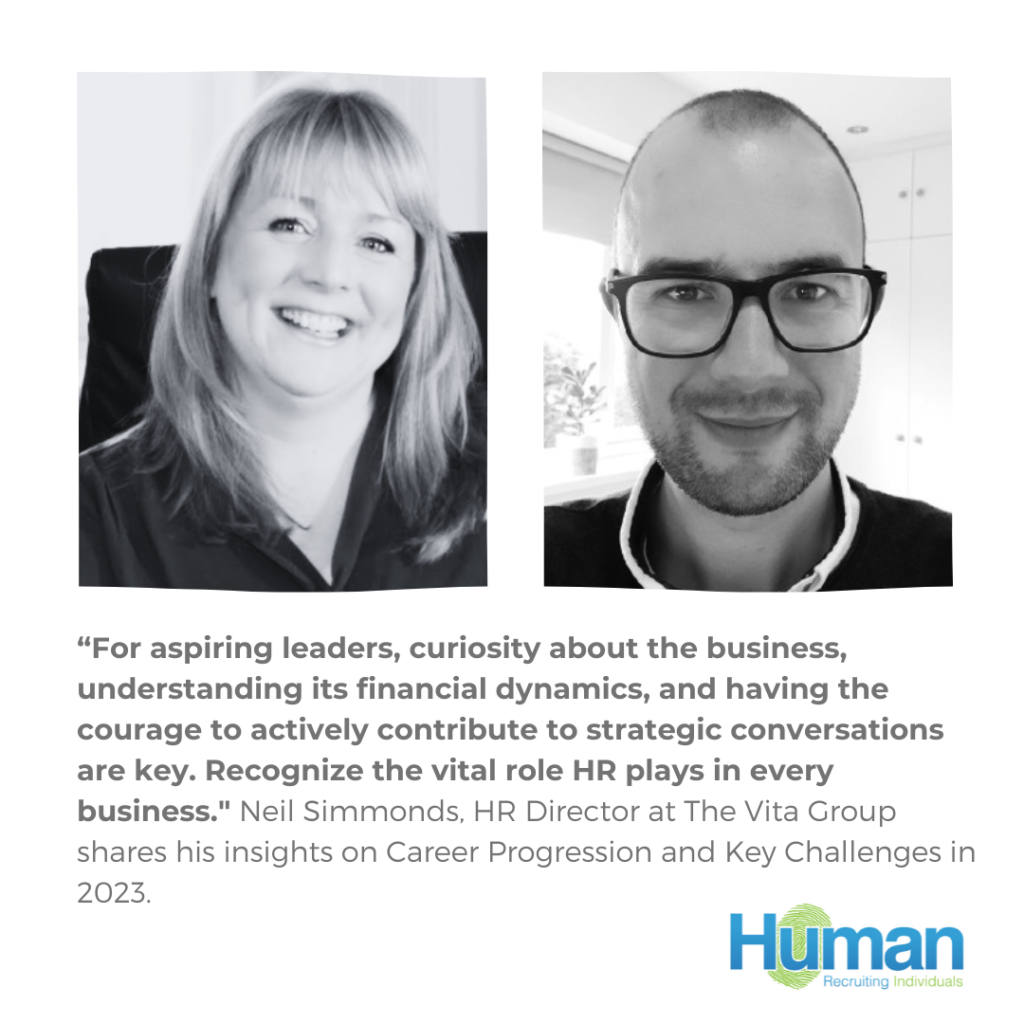Exploring HR Leadership and Organisational Evolution: A Conversation with Jo Laskey
In our latest interview, we spoke with Jo Laskey, a seasoned HR Leader with over 20 years of experience across various industries ranging from corporate giants to startups. Jo’s journey into HR, her approach to navigating organisational challenges, and her insightful perspectives on the ever-evolving role of People Leaders provide invaluable insights for both organisations and HR professionals alike. Can you describe your path into HR? My path into Human Resources began with pursuing a degree in Business and Organisational Studies. During my studies, I was fortunate to have an engaging lecturer who brought the modules of organisational behaviour and industrial psychology to life. This experience inspired me to delve deeper into the field and complete an MSc in Human Resources Management. My first role in HR was with Marconi Communications, where I joined their two-year graduate programme. This opportunity provided me with invaluable development experiences, allowing me to build a solid foundation in HR practices and principles. Through this role, I gained practical insights and skills that have been crucial to my career in Human Resources. How have you navigated your HR career through diverse industries? Navigating my HR career through diverse industries has provided me with unique challenges and invaluable learning experiences. From corporate organisations to startups, I have embraced each role with a curious mind and a willingness to learn and grow. I approached each challenge with determination and a clear focus on aligning strategic HR initiatives with broader business goals. These diverse experiences have enriched my professional growth whilst delivering business success and enhanced employee experience. Can you tell us more about your experience in startup organisations? My experience in startups (sometimes referred to as greenfield) has been both exciting and challenging. I’ve had the unique opportunity to build HR departments from the ground up, which required a blend of resourcefulness, creativity, and strategic thinking. I was driven by a desire to influence culture, enhance the employee experience whilst contributing to the growth/success of the business. What initially drew me to my first startup role was the opportunity to roll up my sleeves and create a roadmap on a completely blank slate. I felt that I could leverage the experience I had gained during my career and apply it to an amazing blank canvas. This hands-on experience allowed me to shape the HR function to align with the company’s evolving needs and growth objectives. How do you navigate the transition into established organisations, particularly in revamping existing HR structures? Transitioning into established (sometimes referred to as brownfield) organisations presents unique challenges, especially when balancing respecting the businesses history and established business culture and existing processes with the need for innovation and change. My approach emphasises stakeholder engagement, collaboration, and alignment of HR strategies with broader business goals. I spend time upfront understanding the business, its journey, heritage and the individuals within it. I engage with stakeholders across the entire organisation. Navigating the transition into established organisations, particularly in revamping existing HR structure requires sensitivity, a strategic approach, and acceptance to ensure alignment with the company’s values. When implementing new initiatives, employee feedback is important to understand what’s working and where perhaps there is a need to refine the approach. For instance, I once received feedback that my approach was ‘too corporate’. I addressed this feedback by piloting initiatives with smaller cohorts, testing the tone of the communications/language and methods before a broader business rollout. These small steps helped ease the transition. Additionally, it’s important to recognise that people’s perceptions of HR can vary significantly based on their previous experiences of HR. There may be historical mistrust or fear of change. Questions may arise about the necessity of a more formalised strategic HR function. In these situations, it’s important to agree upfront with the CEO/leadership team the role of HR in helping drive the success of the business. By clearly communicating HR’s role and its objectives, we can help build understanding and trust. My focus is always on aligning strategic HR initiatives with the company’s strategic goals and implementing them in a manner that respects our cultural heritage. How do you gain support and collaboration from the Senior Leadership Team and/or CEO? Establishing a clear vision and setting well-defined expectations is crucial. Articulating this vision ensures that HR objectives align with the broader business goals, keeping everyone on the same page. Encouraging collaboration across all departments is also vital, fostering a culture of teamwork and mutual support, which ensures that HR initiatives are integrated and supported throughout the organisation. Maintaining open lines of communication and scheduling regular check-ins with the leadership team is essential. These interactions keep everyone informed, address concerns promptly, and ensure ongoing alignment. Demonstrating expertise through data-driven insights and other relevant methods helps build credibility, showing the value HR brings to the organisation. Achieving quick wins is also important, as these early successes demonstrate the immediate value of HR initiatives and help build trust and support from the leadership team. I start by assessing the current state of the organisation, evaluating existing practices, policies, challenges, and systems. This assessment helps identify the gaps that need immediate attention and forms the basis for developing targeted HR strategies. In collaboration with the CEO and the leadership team, we define the objectives and goals for the HR function, ensuring alignment with the business’s overall objectives. Prioritising needs based on this assessment is key. Developing a detailed implementation plan with clear timelines, resource allocation, and milestones is the next step. This plan is agreed upon with the CEO and the leadership team to ensure buy-in and commitment. Consistency in delivering results builds trust and credibility over time. Initially, I have weekly check-ins with the CEO to ensure alignment with business needs and to address any emerging issues promptly. Regular feedback loops and continuous refinement of HR initiatives ensure they remain relevant and effective. This iterative process helps in maintaining ongoing support from the leadership team. As an HR leader in 2024, what are the key challenges you’re
Exploring HR Leadership and Organisational Evolution: A Conversation with Jo Laskey Read More »
